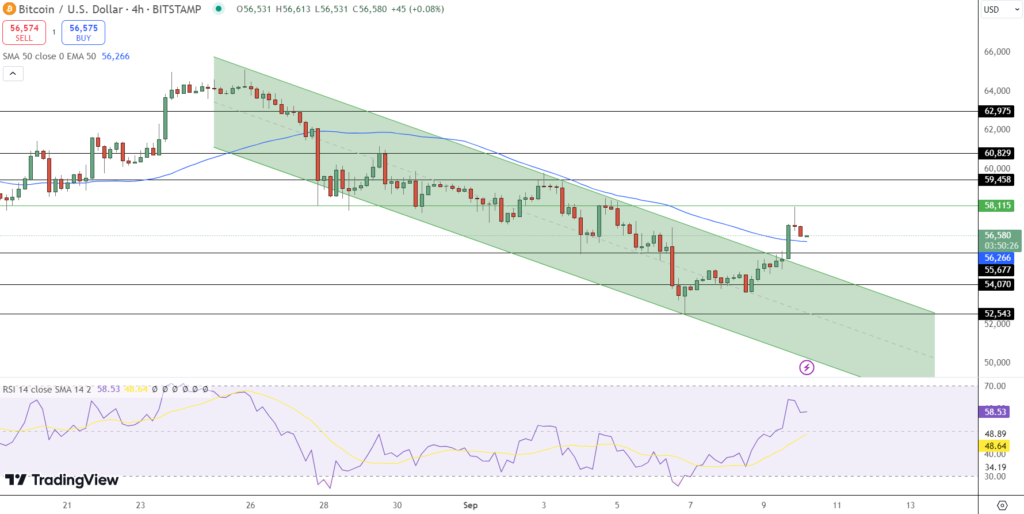Bitcoin Halvings and Why They Matter
Few events in cryptocurrency are as significant as Bitcoin’s (CRYPTO: BTC) halvings, which occur roughly every four years. These events are crucial to Bitcoin’s monetary design and play a pivotal role in the cryptocurrency’s market cycles.
Halvings reduce the reward for mining Bitcoin, cutting the rate at which new BTC enters circulation and ultimately limiting its supply.

When Bitcoin launched in 2009, the reward for mining was 50 BTC per block. Since then, there have been four halving events:
- 2012: Reward reduced to 25 BTC
- 2016: Reward reduced to 12.5 BTC
- 2020: Reward reduced to 6.25 BTC
- 2024: Reward reduced to 3.125 BTC
The next halving is expected in 2028, which will further reduce the reward to 1.5625 BTC. These halvings introduce scarcity into the market, exerting upward pressure on Bitcoin’s price—assuming demand stays the same or increases.
How Halvings Impact Bitcoin’s Price
Bitcoin’s deflationary nature makes its halvings crucial for price movements. Historically, these events have led to price appreciation as fewer new Bitcoin enters circulation, creating scarcity. As demand increases and supply decreases, prices tend to rise.
For example, after each previous halving, Bitcoin saw significant price jumps, with the most notable bull markets following halvings in 2012, 2016, and 2020. These upward price movements make halvings a critical consideration for investors. However, Bitcoin’s price also tends to correct after peaking, leading to “crypto winters”—periods of significant price declines.
What Could Happen Before the 2028 Halving?
As we approach the next halving in 2028, analysts are already speculating about what could happen in the interim. According to Benjamin Cowen, a prominent cryptocurrency analyst, the current market is still in a bullish trend.
He shared a chart comparing Bitcoin’s price across previous cycles, suggesting that 2025 could see a peak similar to past bull markets.
Tweet by Benjamin Cowen:
Benjamin Cowen @intocryptoverse
Despite everything, #BTC is right around where it always is at this point in the market cycle.
If history repeats itself, Bitcoin’s price could continue to rise over the next couple of years, potentially reaching new all-time highs by 2025. However, the market’s notorious volatility should not be overlooked.
Potential Bull Market in 2025 and Beyond
If current trends hold, 2025 could see Bitcoin reaching a significant price peak. While predicting the exact number is difficult, previous cycles have seen Bitcoin experience dramatic price increases post-halving. However, these bull markets often end as quickly as they begin.
In the 2021 bull market, for example, Bitcoin surged to an all-time high of $68,000 before plunging to $34,000 within two months.

The price eventually bottomed out at $16,000 in late 2022, marking the beginning of a bear market, or “crypto winter.” Similar market corrections could occur after the next peak.
Preparing for Volatility
As we move closer to the next halving, it’s essential to recognize Bitcoin’s volatility. Price peaks are often followed by steep corrections, but these corrections historically present opportunities for long-term investors.
During market downturns, Bitcoin can be accumulated at lower prices, positioning investors to benefit from the next upward cycle.
Key Takeaways for Investors:
- The next Bitcoin halving will occur in 2028, reducing block rewards to 1.5625 BTC.
- Historically, halvings have led to price increases due to reduced supply and increasing demand.
- 2025 could see another price peak based on historical market cycles, but sharp corrections could follow.
- Investors should be prepared for volatility, with bear markets offering opportunities to accumulate Bitcoin at lower prices.
Conclusion: Navigating Bitcoin’s Cycles
While no one can predict the future with certainty, Bitcoin’s price cycles offer valuable insights. As the next halving approaches in 2028, understanding the dynamics of past halvings and market cycles can help investors navigate volatility and potentially capitalize on Bitcoin’s long-term growth.
With 2025 expected to be a pivotal year for Bitcoin’s price, it’s essential to remain informed and prepared for the opportunities and risks ahead.

